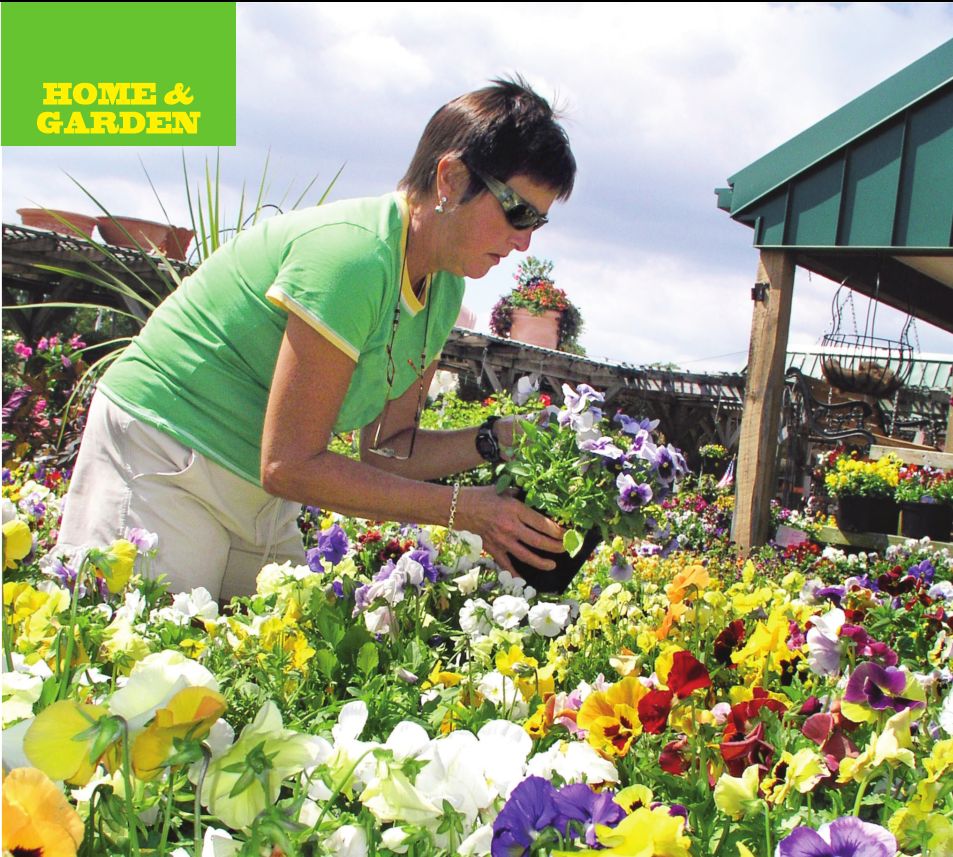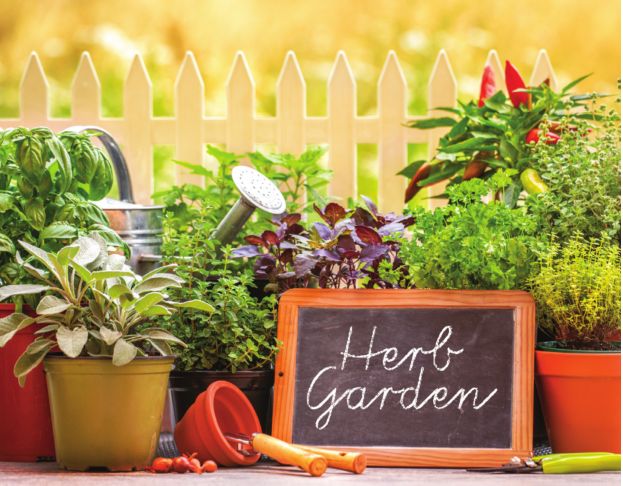
If landscaping goes in cycles, where every few years there’s a wildly popular new thing you suddenly see everywhere, followed by a few years of refinements until the next new splashy thing, this is one of the quiet years, according to Green View landscapers Pamela O’Neill and Becca Trace. This year, there isn’t anything new coming out like the compact Stella d’Oro daylily, Tiger Eye golden leaf sumac, Endless Summer blue hydrangea or ubiquitous Knock Out rose bushes. But both landscapers see three trends and several new cultivars (varieties) of garden classics for 2016.
“We are seeing a trend toward self sufficiency,” says O’Neill. “People are planting more fruits, vegetables and herbs.”
And not just locally. Lynn Jackson Kirk calls this trend welltality. “Maximizing wellness through horticulture is more than a concept; now it’s a reality,” Kirk writes. “More and more, people are putting their health first at home and work, on vacation and at the grocery. The gardento-table movement and organic growing methods remain high priorities in the quest for optimal health, as do plant-yourown wholesome fruits and vegetables.
Container plants, plant walls and even indoor forests in larger spaces are being set out for oxygen production. And with one in three dogs getting cancer each year, pet owners are joining parents in the quest for environmentally safe backyards free of chemicals and poisonous plants.”
“People are also becoming more water conscious and planting more dwarf, container, drought-tolerant and native plants, such as mass planting prairie flowers and grasses,” says Trace.
“We are a prairie state that’s lost a lot of its prairie,” O’Neill continues. Prairie flower beds support bees and butterflies, require less water and take less maintenance. “You only have to mow it once a year.”
And gardeners want ever more versatile plants, “more bang for their buck,” says Trace. “They want plants that thrive in both sun and shade, that offer a long blooming season, stages of color and year-round interest in the landscape.”
Watch for these new takes on longstanding garden anchors, especially those that provide color in the foliage.
“You’re not just stuck with green viburnum or privet hedge,” says O’Neill. “There are colorful foliage options even in the summer so you don’t have to wait for flowers to bloom to enjoy color in your garden.”
• Panicle hydrangea, hardier in our Zone 5 gardens
• Gold Leaf, pink-flowered spirea
• Various weigela hybrids, new colors and sizes of this old-fashioned favorite
• Fire Chief dwarf arborvitae that requires much less pruning
• Elderberry, that does well in sun and shade and offers multiple seasons of interest
• Ninebark woody shrub, dwarf and full size, with burgundy foliage, various colors of blooms and exfoliating bark in the winter. “This is nice planted next to a chartreuse spirea or certain junipers,” says O’Neill.
• Coral bell hybrids, which offer “cool foliage, texture, and color,” says Trace.
• Baptisia, two new colors. “It’s a wonderful specimen plant if you have the room for it. It gets large,” says Trace.
• Hyssop, a large perennial with a new larger flower, and colorful bright orange and dark purple varieties
• Purple coneflowers now in reds, yellows, bolds, doubles and dwarf varieties. Great to attract honey bees.
How are recent garden winners holding up?
The
Stella d’Oro is still great for mass plantings, says Trace. The Crimson
Pygmy barberry bush has been replaced by the Dark Horse weigela which
provides dramatic burgundy foliage and pink flowers without the thorns.
Knock Outs are still going strong, but smaller cousin, the Home Run, is
now offered in pinks and reds and is equally disease resistant.
Finally,
for rose lovers looking for a low color layer in front of a boxwood
hedge, for example, the new Drift rose is less loose, more refined, with
more blooms than earlier ground cover roses. “It’s a huge boon to the
carpet-type rose family,” says O’Neill. “It’s salt tolerant, like all
roses, has a long bloom time, and only grows between 18 and 24 inches
tall.”
Maybe just new
for you Every day in the garden is a new opportunity to experiment,
discover and enjoy. If something doesn’t work in one location, it might
work somewhere else. What someone else has planted for 10 years might
find a home in your yard for the first time this spring. And many great
theme ideas can update your yard: color combinations; water, water basin
or hardscape features; lovely white moonlight plantings, children’s
sensory gardens; songbird, butterfly and bee gardens; herbs, and more.
Make some notes and a simple drawing, measure your sunlight, look in
books, and then take a trip to your favorite garden center. You’re on
your way to a beautiful garden.
DiAnne
Crown is a frequent Home and Garden contributor and homeowner who knows
the difference between a weed and a fl ower. It all depends on who’s
mowing.
Keep your flowers blooming
It’s
called deadheading, but that’s a misnomer. “People think that means
just cutting off the top two inches of a flower stem that’s turned
brown,” says landscaper and horticulturalist Pamela O’Neill from the
Green View garden center in Springfield. “But, for many annuals and
perennials, you should cut the stem back to the ground every bloom of
the season. This will let your plant actually start over, and you can
expect three or four blooms lasting all season long.” Examples include
salvia, veronica, coneflower, Shasta daisy and rudbeckia, but there are
many more soft-stemmed flowers that need to be cut way back, she says.
Do not deadhead woody “sub-shrubs” such as lavender, Russian sage and
butterfly bush in this way, however.